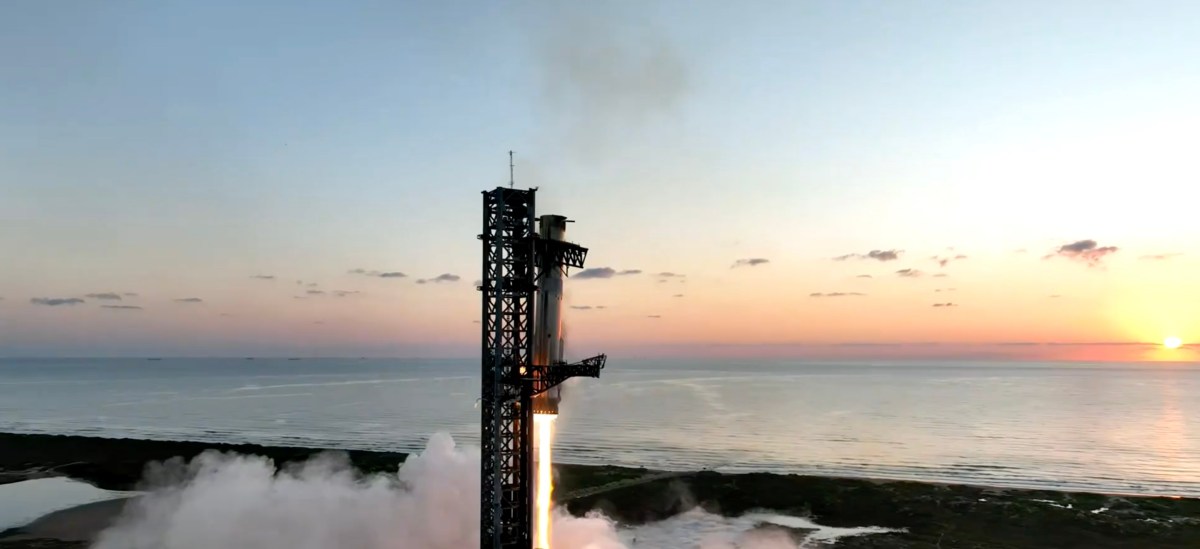Tech
Startup adds beds and Wi-Fi to buses to turn them into ‘moving hotels’
Nulla pariatur. Excepteur sint occaecat cupidatat non proident, sunt in culpa qui officia deserunt mollit anim id est laborum.

Et harum quidem rerum facilis est et expedita distinctio. Nam libero tempore, cum soluta nobis est eligendi optio cumque nihil impedit quo minus id quod maxime placeat facere possimus, omnis voluptas assumenda est, omnis dolor repellendus.
Nulla pariatur. Excepteur sint occaecat cupidatat non proident, sunt in culpa qui officia deserunt mollit anim id est laborum.
Sed ut perspiciatis unde omnis iste natus error sit voluptatem accusantium doloremque laudantium, totam rem aperiam, eaque ipsa quae ab illo inventore veritatis et quasi architecto beatae vitae dicta sunt explicabo.
Neque porro quisquam est, qui dolorem ipsum quia dolor sit amet, consectetur, adipisci velit, sed quia non numquam eius modi tempora incidunt ut labore et dolore magnam aliquam quaerat voluptatem. Ut enim ad minima veniam, quis nostrum exercitationem ullam corporis suscipit laboriosam, nisi ut aliquid ex ea commodi consequatur.
At vero eos et accusamus et iusto odio dignissimos ducimus qui blanditiis praesentium voluptatum deleniti atque corrupti quos dolores et quas molestias excepturi sint occaecati cupiditate non provident, similique sunt in culpa qui officia deserunt mollitia animi, id est laborum et dolorum fuga.
“Duis aute irure dolor in reprehenderit in voluptate velit esse cillum dolore eu fugiat”
Quis autem vel eum iure reprehenderit qui in ea voluptate velit esse quam nihil molestiae consequatur, vel illum qui dolorem eum fugiat quo voluptas nulla pariatur.
Temporibus autem quibusdam et aut officiis debitis aut rerum necessitatibus saepe eveniet ut et voluptates repudiandae sint et molestiae non recusandae. Itaque earum rerum hic tenetur a sapiente delectus, ut aut reiciendis voluptatibus maiores alias consequatur aut perferendis doloribus asperiores repellat.
Lorem ipsum dolor sit amet, consectetur adipisicing elit, sed do eiusmod tempor incididunt ut labore et dolore magna aliqua. Ut enim ad minim veniam, quis nostrud exercitation ullamco laboris nisi ut aliquip ex ea commodo consequat.
Nemo enim ipsam voluptatem quia voluptas sit aspernatur aut odit aut fugit, sed quia consequuntur magni dolores eos qui ratione voluptatem sequi nesciunt.
Tech
Apple might release a $2,000 Vision headset next year

Apple’s Vision Pro hasn’t exactly reshaped the market, but the company isn’t giving up on headsets that combine the digital and real worlds.
A new report from Bloomberg’s Mark Gurman says that Apple’s next big mixed reality release could come as early as next year, with the launch of a Vision headset costing around $2,000 — not exactly cheap, but more affordable than the $3,500 Vision Pro. To achieve this price, Apple would use cheaper materials and a less powerful processor, and it would not include the EyeSight feature that shows a user’s eyes outside the headset.
Next up would be a second-generation Vision Pro in 2026, and then potentially smart glasses (akin to Meta’s Ray-Bans) and AirPods with cameras in 2027.
The same report offers an update on Apple’s smart home strategy. The company hasn’t had much success here, either, but there are reportedly plans for an “an affordable iPad-like screen” that could be placed around the house to watch TV, make FaceTime calls, and use apps. This would be followed by a tabletop device with a robot arm, which could cost around $1,000.
Tech
SpaceX successfully catches returning Starship booster

For the first time, SpaceX not only launched its mammoth Starship, but also returned the booster to the launch site and to caught it with a pair of oversized “chopsticks.”
This test flight — the fifth in the Starship development program — took place Sunday morning at the company’s Starbase site in southeast Texas. The nearly 400-foot-tall Starship is at the centerpiece of SpaceX’s stated ambition to make life multi-planetary, but more immediately NASA’s ambitious Artemis campaign to return humans to the surface of the moon.
SpaceX envisions rapid reuse of the entire Starship vehicle, which includes an upper stage (also called Starship) and a Super Heavy booster — but that means proving out the capability to recover both stages and quickly refurbish them for future flights.
So it makes sense that the primary objectives for this fifth flight test were two-fold: attempting the first-ever “catch” of the Super Heavy booster at the launch site and an on-target Starship reentry and splashdown in the Indian Ocean.
The latter goal had already been achieved: SpaceX nailed a controlled reentry and splashdown of the Starship upper stage during the last test mission in June. But the booster catch, as the company put it in a blog post, would be “singularly novel” in the history of rocketry.
The closest analogue is the now-routine Falcon 9 booster landings on autonomous barges and terrestrial landing zones. In today’s launch, the booster slowed to a hover and gently positioned itself inside the zone of two “chopstick” arms attached to the launch tower. Those arms then closed around the booster and hold it up after its engines stop firing.
You can see the catch at around 40 minutes into SpaceX’s video of the test. Following the booster detachment and catch, Starship continued to ascend into orbit before splashing in the Indian Ocean and exploding (SpaceX had not planned to recover the spacecraft).
SpaceX noted in an update posted on its website that “thousands” of criteria showing healthy systems across the vehicle and pad had to be met for the catch attempt to occur. This test also took place a little sooner than expected: the Federal Aviation Administration had previously said that it did not anticipate issuing a modified launch license for this test before late November.
That timeline gave much umbrage to SpaceX, leading the company to repeatedly call out what it characterized as the regulator’s inefficiency. But the FAA announced on Saturday that it had approved the launch.
“The FAA determined SpaceX met all safety, environmental and other licensing requirements for the suborbital test flight,” the regulator said in a statement. Notably, the authorization also includes approval for the next test flight, given that “the changes requested by SpaceX for Flight 6 are within the scope of what has been previously analyazed,” the FAA said.
While awaiting this launch license, SpaceX engineers have stayed very busy: in recent months, they have conducted numerous tests on the launch tower, completely replaced the rocket’s entire thermal protection system with newer tiles and a backup ablative layer, and updated the ship’s software for reentry. This week, engineers completed propellant loading tests and testing of the launch pad’s water deluge system, which is meant to protect the pad from the powerful fire of the booster’s 33 Raptor engines.
The company eventually plans on bringing the Starship upper stage back to the landing site too, though we’ll have to wait to see that in future test launches.
“With each flight building on the learnings from the last, testing improvements in hardware and operations across every facet of Starship, we’re on the verge of demonstrating techniques fundamental to Starship’s fully and rapidly reusable design,” the company says. “By continuing to push our hardware in a flight environment, and doing so as safely and frequently as possible, we’ll rapidly bring Starship online and revolutionize humanity’s ability to access space.”
Anthony Ha contributed to this report, which has been updated to reflect the successful test flight.
Tech
Director Morgan Neville is steering clear of generative AI after ‘Roadrunner’ backlash

One of the most attention-grabbing aspects of “Roadrunner,” the Morgan Neville-directed documentary about Anthony Bourdain, was Neville’s use of generative AI to replicate Bourdain’s voice.
Looking back now, Neville told Wired that he saw this as a “fun” way to “keep [Bourdain’s] voice going in the film.” But his approach drew intense criticism — while the synthetic Bourdain only read words that the real Bourdain had actually written, Neville said many viewers assumed, “Oh, they just made [expletive] up.”
“Many people told me that there were other documentary projects that were doing the same thing, that all reacted; they either changed what they were doing or put giant disclaimers over everything,” he said.
Since then, the director has “assiduously avoided” using AI. Even in his new documentary “Piece by Piece,” in which he dramatizes musician Pharrell’s life with Legos (yes, really), Neville was careful to steer clear.
“Carl Sagan in [Piece by Piece] says, ‘Pharrell’ and I was very clear to everybody that we were, with permission of his widow, going to make him say ‘Pharrell’ without using AI,” Neville said. “We actually experimented to construct the word from syllables [he actually said].”






